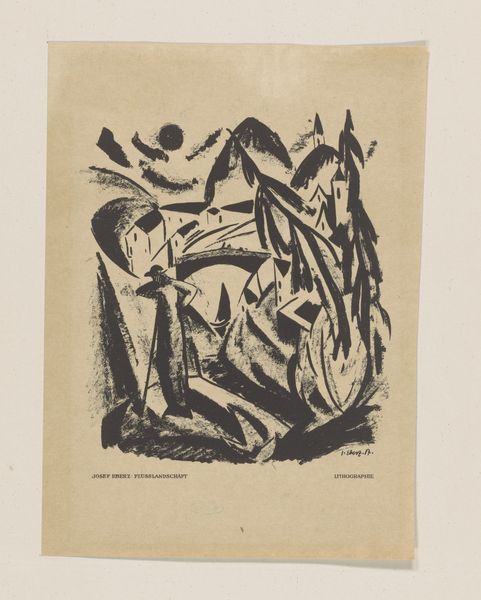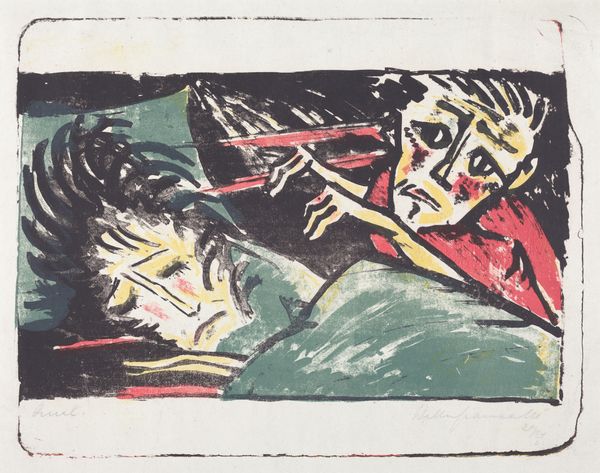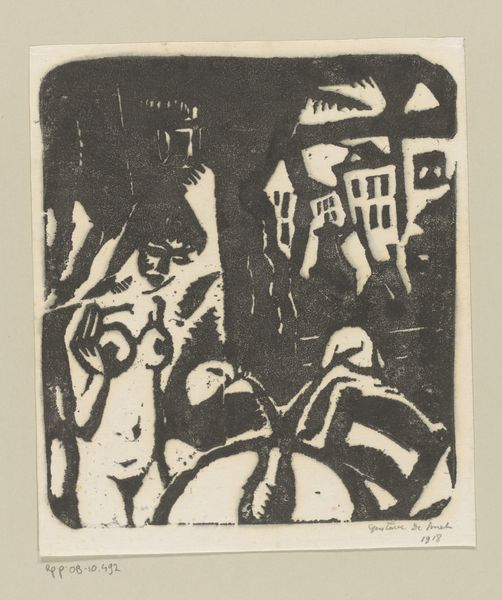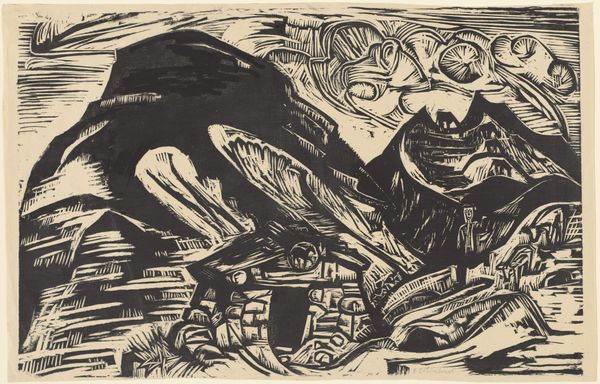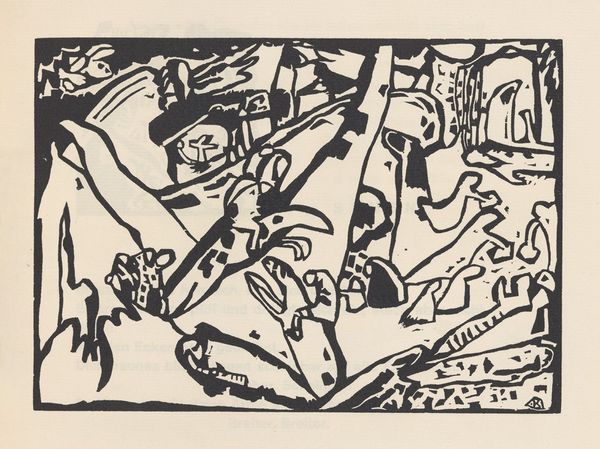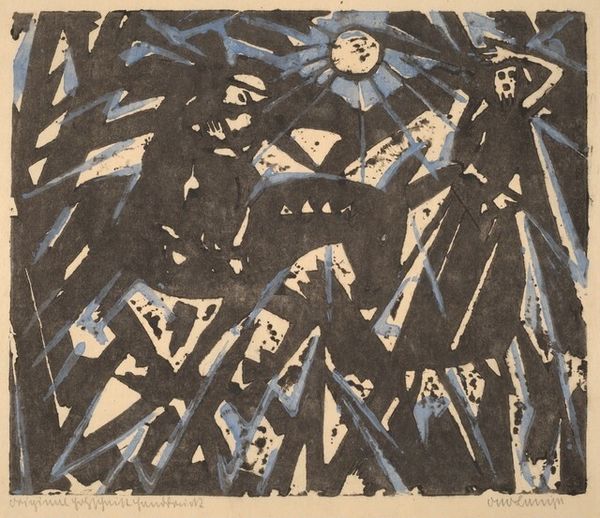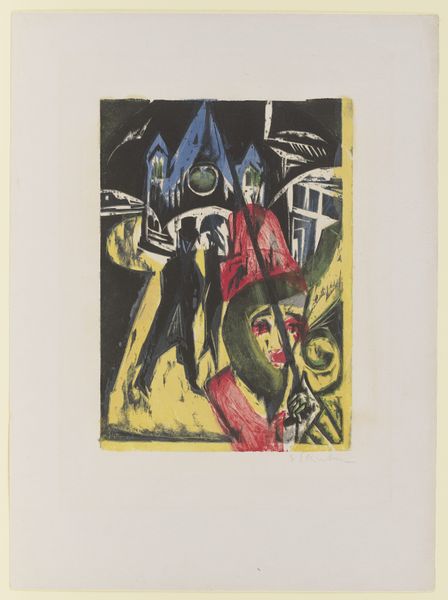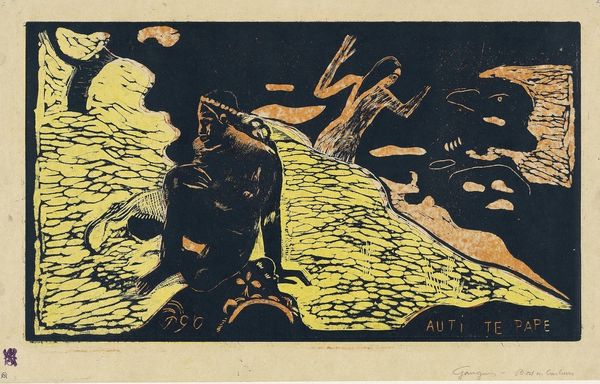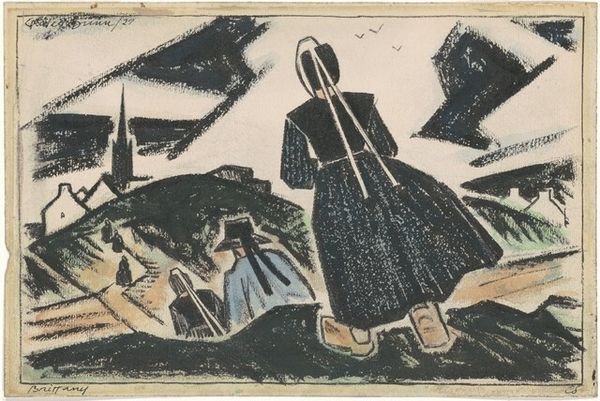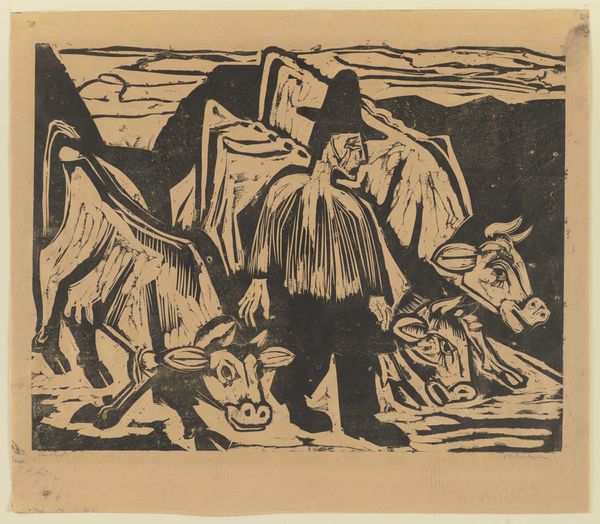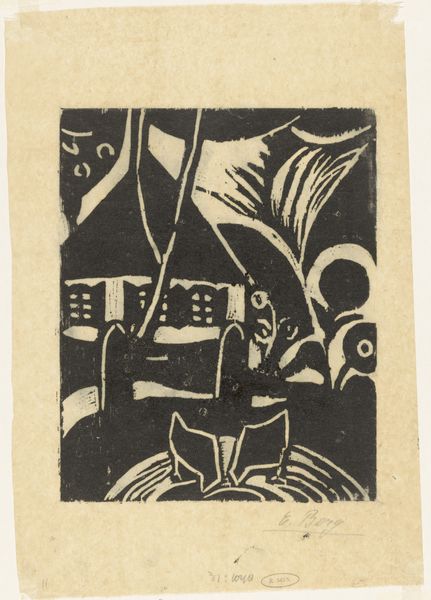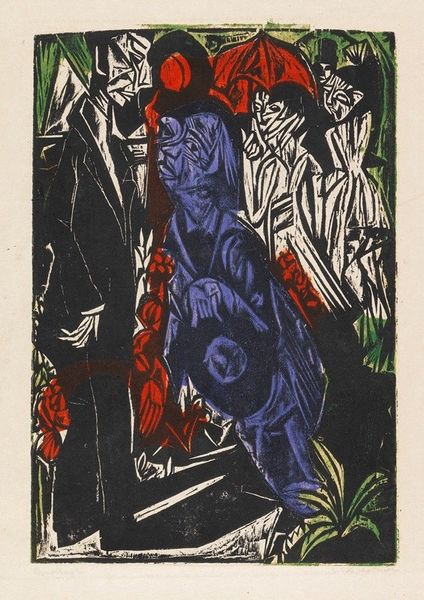
drawing, print, linocut
#
drawing
#
linocut
# print
#
linocut
#
landscape
#
figuration
#
linocut print
#
expressionism
Copyright: Public Domain
Editor: We're looking at "Cows with Herdsman," a 1919 linocut print by Ernst Ludwig Kirchner, currently at the Städel Museum. The color palette is quite striking and limited—a red-orange, olive green, and stark black dominate. There's a definite tension in the composition; the forms are angular and somewhat unsettling. How do you read this piece from a formalist perspective? Curator: Precisely. Observe the angularity, as you noted. It disrupts any conventional pastoral harmony. Kirchner utilizes stark contrasts in value to flatten the picture plane, rejecting traditional perspective. Consider, too, the function of line here. It’s not descriptive but constitutive. Notice how thick, black lines carve out the forms, almost violently separating them from one another, denying the viewer a seamless transition from form to form. It refuses classical illusionism, wouldn't you agree? Editor: Yes, the black lines definitely create a sense of fragmentation. It almost feels like looking at shattered pieces reassembled, especially with the cows. What does this fracturing achieve, formally speaking? Curator: It thwarts a comfortable, representational reading. By fracturing the forms, Kirchner forces us to acknowledge the constructed nature of the image itself. It foregrounds the materiality of the linocut – the carving, the printing, the stark, irreducible colors. In a sense, it's not about *cows* or a herdsman but about the *idea* of representation conveyed through aggressively stylized formal means. The tension arises from this inherent contradiction: a recognizable subject rendered unrecognizable through deliberate formal distortion. The aesthetic is not about an imitation of nature, but about itself. Editor: That’s fascinating! So it's less about the scene and more about the artistic choices and the material qualities of the print itself. Thank you! Curator: Indeed. The piece insists on being seen, first and foremost, as a product of artistic construction rather than a mere window onto a pastoral scene. A potent reminder, I think, to always scrutinize the intrinsic properties of an artwork.
Comments
No comments
Be the first to comment and join the conversation on the ultimate creative platform.
